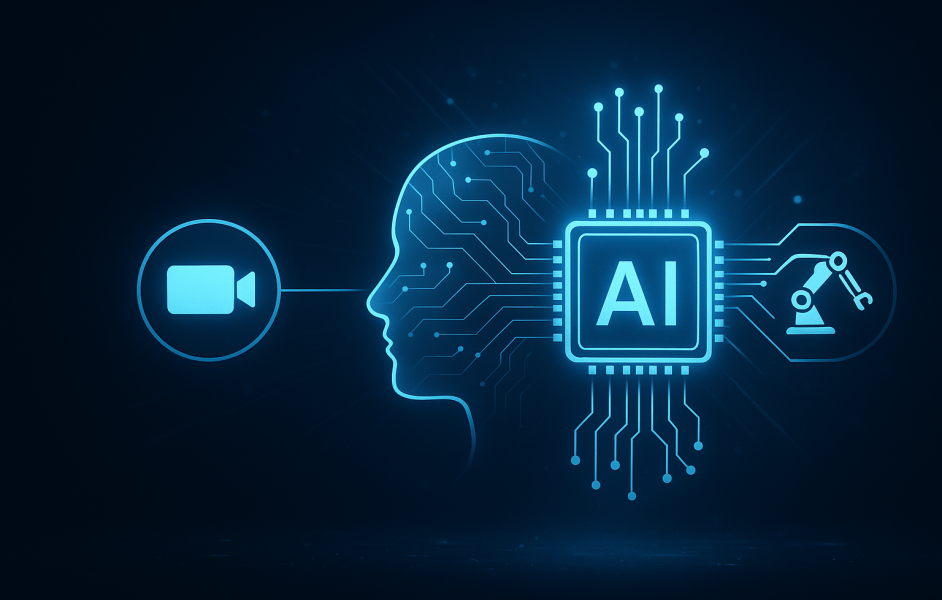The AI industry—and the resulting dialog—is shifting focus away from efforts to train AI models. That story, which took place centrally in the cloud or data centers (or both), is “old news.” Now, with a myriad of use cases across most industries, these models are being deployed and run in distributed, decentralized environments. The industry is transitioning from the training phase to the inferencing one, and this story is happening at the edge with real-time intelligence needed for everything from smart cameras to devices embedded in industrial machinery. The focus is shifting from centralized AI training to Edge AI, or hybrid deployments.
In an era where speed, precision, and data privacy are more critical than ever, Edge AI is redefining operational processes at businesses’ most critical touchpoints. Unlike traditional AI models that rely on cloud infrastructure, Edge AI brings decision-making closer to the point of data generation.
The Value of Edge AI
Minimizing the distance between data generation and decision-making minimizes latency by eliminating lag from network transmission resulting in faster delivery of predictive insights and automated decisions. This real-time processing delivers efficiency gains for organizations, improving everything from customer experiences to product quality, or even supporting employee safety. Regardless of use case, the shorter distance also improves security and reliability by reducing the amount of time sensitive data is in motion and lowering required bandwidth.
Immediacy and relevance are paramount, regardless of industry sector.
For example, in manufacturing, Edge AI can power quality assurance systems that flag product defects instantly. In healthcare, it can support patient monitoring systems that trigger alerts the moment anomalies are detected. Retailers will use Edge AI to personalize in-store customer experiences and manage inventory dynamically. In all these scenarios, though, the required intelligence sitting at the edge is a major differentiator. Edge AI is critical when milliseconds matter.
Context Matters from the Data Center to the Edge
While GPUs are often viewed as synonymous with AI, Edge AI involves more nuance, as the needs and nature of workloads for inferencing are fundamentally different from the ones for model training. Many inferencing workloads—particularly vision-based applications—can be handled efficiently by CPUs, which are more power- and cost-efficient. Even if an edge deployment requires higher performance, a newer class of low-power GPUs has emerged, offering tailored solutions for the edge.
Ultimately, choosing the right configuration is an exercise in balancing the specific workload, desired throughput, and environmental constraints. Edge AI deployments require hardware that balances performance with practical operability in the field.
Success at the edge requires a fundamentally different approach that addresses space, power, and cooling constraints while maintaining performance. Hardware and software must be designed specifically for edge demands, which often include the ability to operate reliably in harsh environments without compromising compute capacity. The alternative is downtime, which can have devastating downstream effects.
The Path to Success
The path to Edge AI success begins with identifying a single, high-impact use case and focusing an initial deployment on it. This type of focus keeps the scope manageable for an organization while establishing positive momentum with the deployment, enabling the organization to grasp the potential of this technology while refining operational processes and support frameworks.
However, this is also easier said than done!
Most organizations looking to capitalize on AI deployments are not deeply versed, nor have been immersed in all the underlying technologies. This knowledge gap leaves them seeking guidance and enhanced capabilities from external partners. Especially as deployments proliferate and the industry moves from training at the core to inferencing at the edge, the software and services requirements that go along with the hardware become more important as well. Furthermore, complexity will only increase going forward. Especially at the edge where downtime can have massive—and costly—downstream ramifications, partnering with the expertise and the services needed to ensure consistent performance are non-negotiables.
A common pitfall organizations encounter is focusing too narrowly on proof-of-concept projects without a clear path to scale. Organizations must also account for operational complexity—from remote manageability and fault tolerance to lifecycle support. More reasons for working with an experienced partner is critically important. Unlike data centers, where systems are closely monitored and refreshed frequently, edge infrastructure must be designed for longevity, with a typical target being five to seven years.
Additionally, organizations are increasingly keen to consolidate edge compute resources to reduce footprint and cost. This combines traditional workloads with AI applications on unified, virtualized platforms, eliminating the need for separate infrastructures, but increasing the need for real-time intelligence.
Edge AI Going Forward
Edge AI is evolving rapidly, moving from rule-based systems to more adaptive, context-aware intelligence. With advances in generative AI and foundation models, edge systems are beginning to support continuous learning loops, adjusting autonomously based on data inputs without relying on the cloud.
Kubernetes-based deployments and containerized models establish the consistency necessary to keep Edge AI deployments efficient. Containerization makes it easier to push rapid updates from the cloud to the edge, and Kubernetes orchestrates containers at scale, managing deployments, updates and health checks automatically. This increased efficiency and reliability of updates being pushed across edge nodes also improves model accuracy and delivers greater resilience and uptime—critical to retaining the value of any Edge AI deployment. Concurrently, edge devices can collect new data that will help train better models in a closed-loop AI system.
Edge AI is much more than just a buzzword. It is the tangible evolution in the way industries will harness intelligence at the point of interaction in the future – and it’s coming fast. With an Edge AI plan coupled with the right infrastructure and system capabilities, organizations can unlock powerful new efficiencies in AI—gaining responsiveness while avoiding costly downtime.
